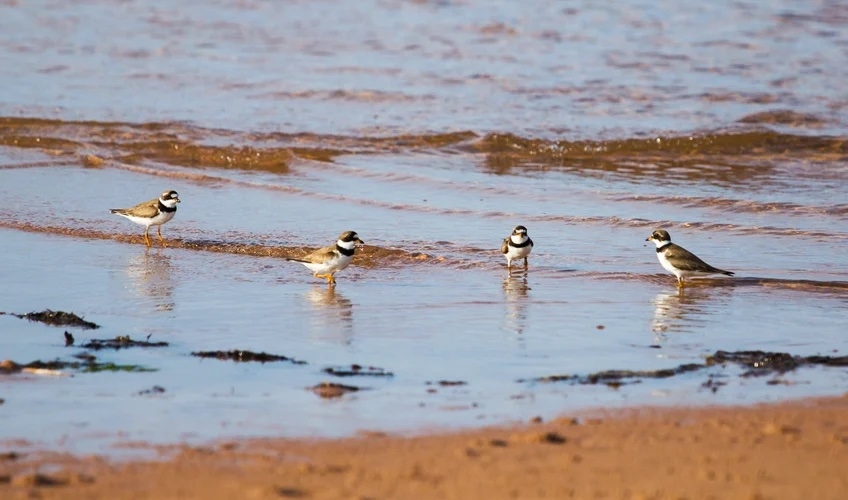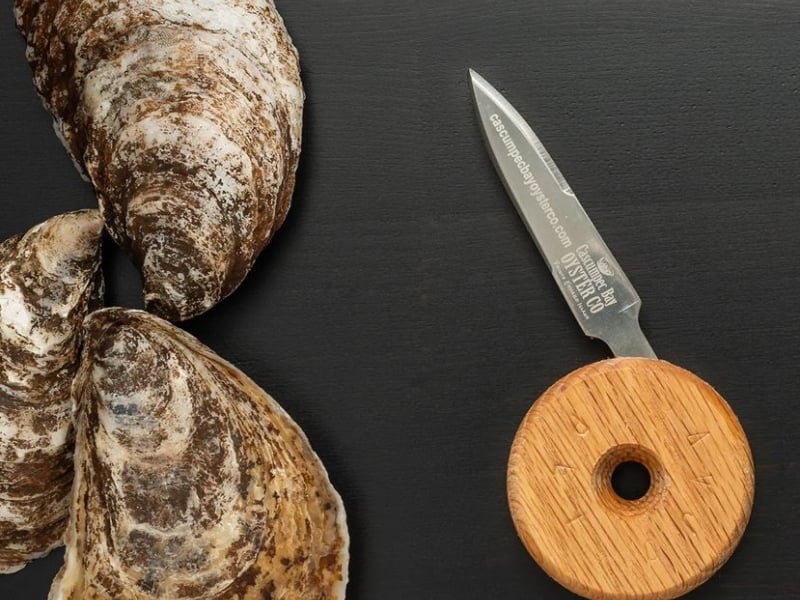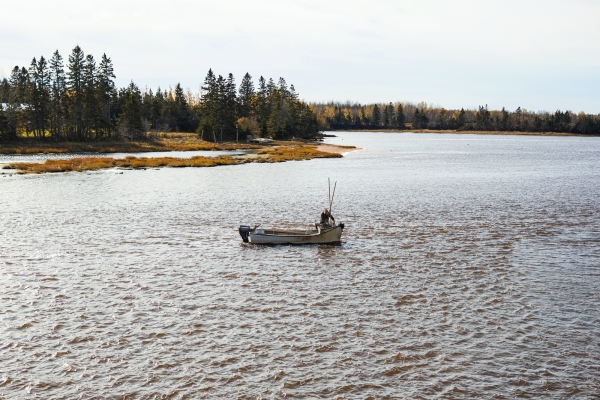A Gulf of Marine and Cultural Riches
The Gulf of Saint Lawrence, in which Prince Edward Island sits, is a triangular inland sea covering 250,000 square kilometres. Fed with fresh water from the St. Lawrence River, the gulf empties into the Atlantic Ocean in two spots: the Strait of Belle Isle in the northeast and the Cabot Strait in the southeast. Continental shelves, deep channels and canyons exist below the water. For thousands of years, people have relied on the gulf for food and transportation. It is home to many marine species and a diverse range of coastal habitats including sandy beaches, salt marshes and rocky shores.
A haven for birds
Cascumpec Bay is a relatively shallow body of water that covers approximately 40 square kms. Its ecosystem is designated as an Important Bird Area by Nature Canada, and no wonder! It is a popular site for Canada geese migration as well as a nesting habitat for the great blue heron and osprey. The surrounding sand hills play host to nesting piping plovers and colonies of common tern. The lands at the south end of the bay are almost entirely composed of peat, a surface layer of soil that consists of partially decomposed organic matter, mostly plant materials. Its dark colour has earned it the nickname of Black Banks.

Home of the Briny-Sweet Malpeque Oyster
The warm, shallow and rich bays and estuaries of this area provide excellent conditions for the world-famous Malpeque Oyster to grow. Oysters are an important livelihood for many Islanders.
This region is the leading oyster producer in Canada, so fittingly it’s known as Canada’s Oyster Coast.

While in the area, visit Cascumpec Bay Oyster Co. to enjoy freshly shucked oysters while overlooking the water or grab them to go.
